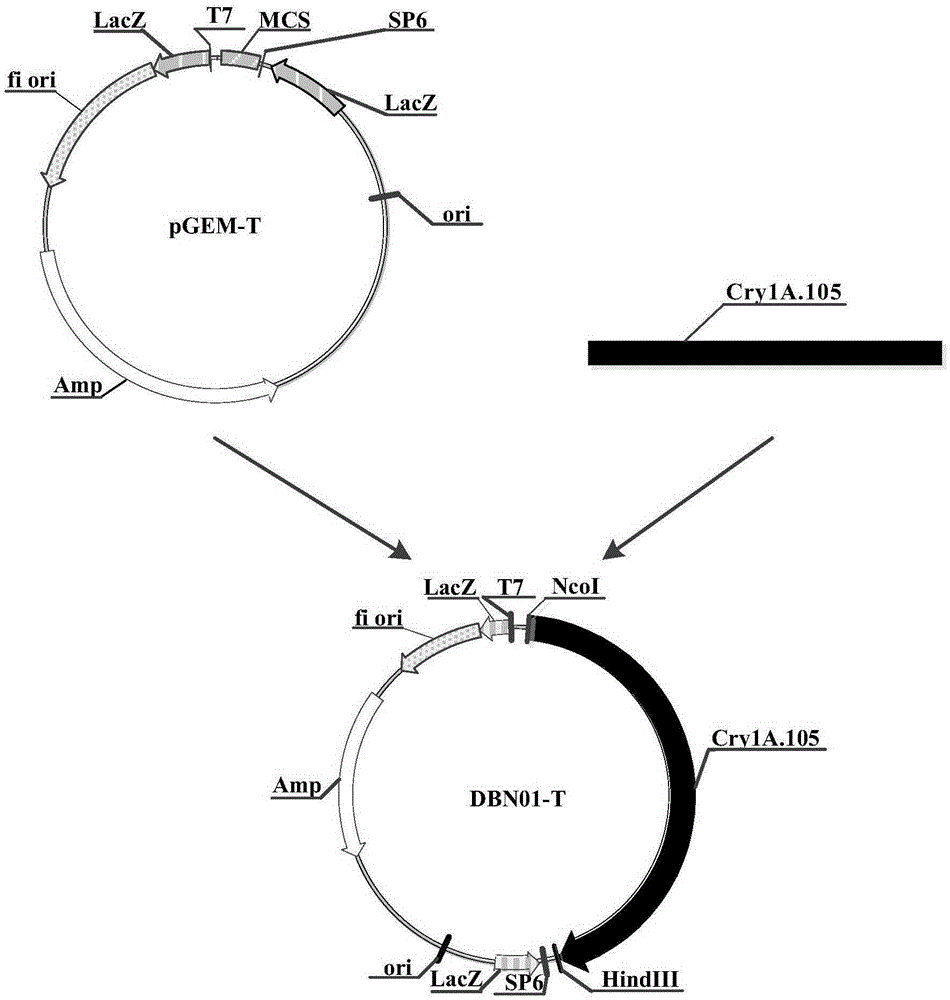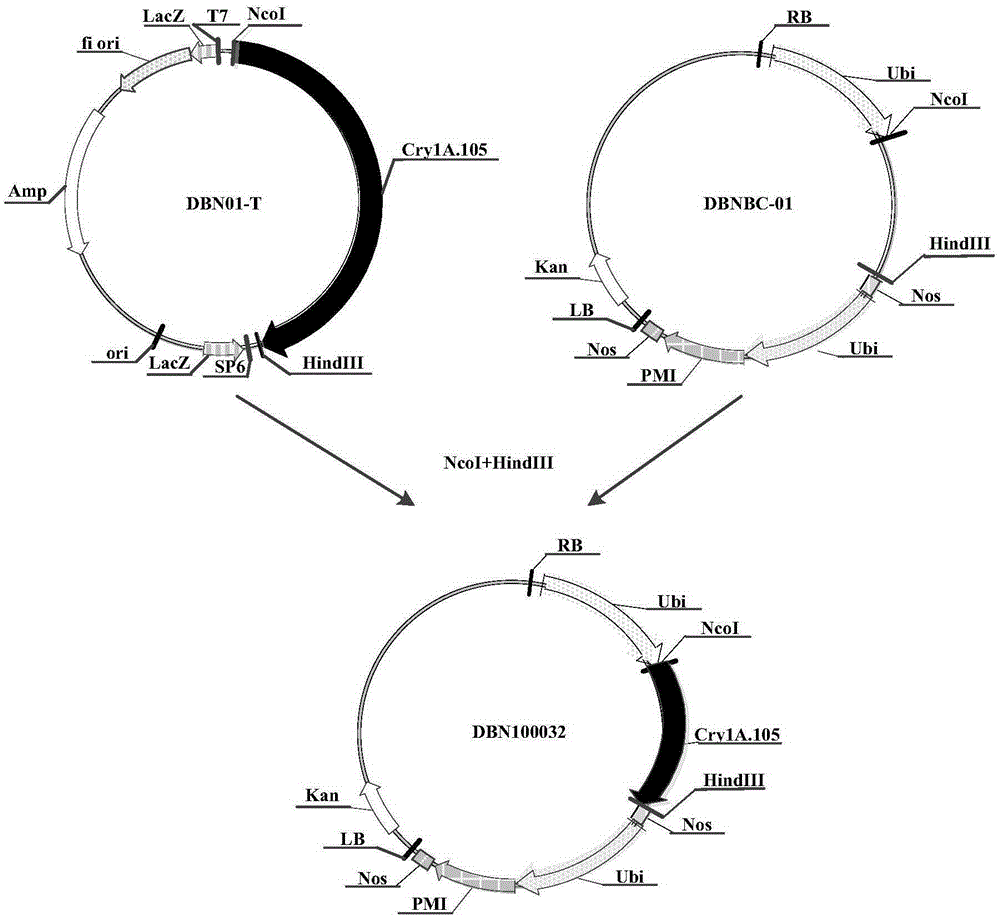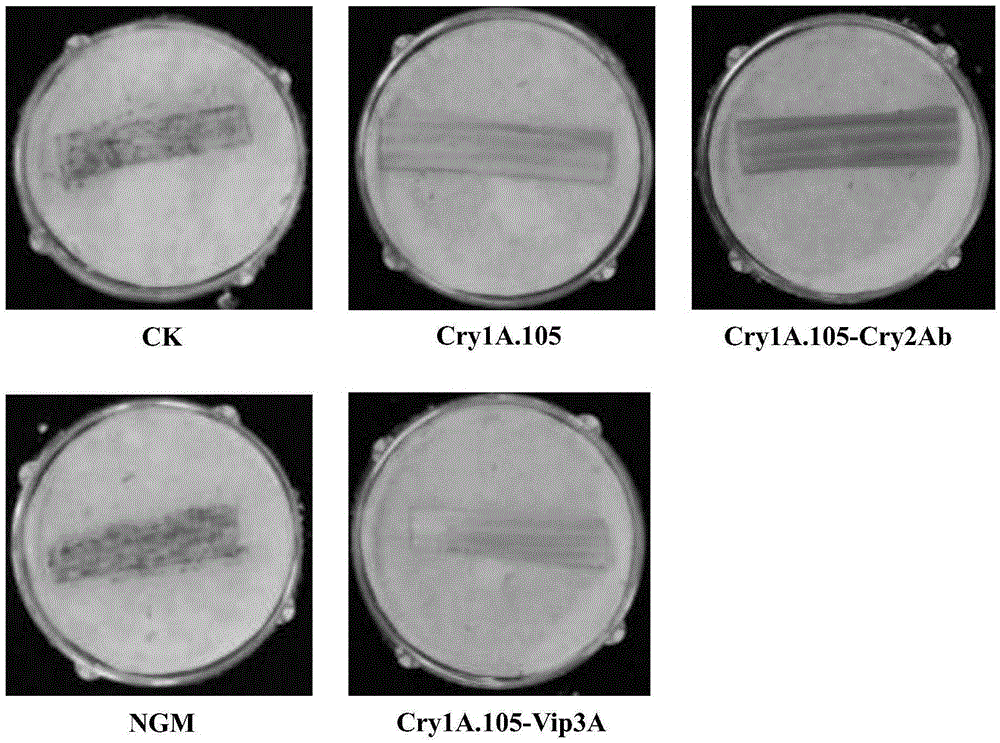Methods of Controlling Pests
A pest, protein technology, applied in the fields of botanical equipment and methods, biochemical equipment and methods, pesticides, etc.
- Summary
- Abstract
- Description
- Claims
- Application Information
AI Technical Summary
Problems solved by technology
Method used
Image
Examples
specific Embodiment approach
[0083] The technical scheme of the method for controlling pests of the present invention is further illustrated below through specific examples.
no. 1 example
[0084] The first embodiment, the acquisition and synthesis of Cry1A.105 gene
[0085] 1. Obtain the nucleotide sequence of Cry1A.105
[0086] The amino acid sequence (1177 amino acids) of the Cry1A.105 insecticidal protein, as shown in SEQ ID NO: 1 in the sequence listing; Cry1A.105 nucleosides encoding the amino acid sequence (1177 amino acids) corresponding to the Cry1A.105 insecticidal protein acid sequence (3534 nucleotides), as shown in SEQ ID NO:2 in the sequence listing.
[0087] 2. Obtain the nucleotide sequences of Cry2Ab and Vip3A
[0088] The Cry2Ab nucleotide sequence (1905 nucleotides) encoding the amino acid sequence (634 amino acids) of the Cry2Ab insecticidal protein, as shown in SEQ ID NO: 3 in the sequence listing; the amino acid sequence (789 amino acids) encoding the Vip3A insecticidal protein The Vip3A nucleotide sequence (2370 nucleotides), as shown in SEQ ID NO: 4 in the sequence listing.
[0089] 3. Synthesize the above nucleotide sequence
[0090] ...
no. 2 example
[0091] The second embodiment, construction of recombinant expression vector and transformation of recombinant expression vector into Agrobacterium
[0092] 1. Construction of a recombinant cloning vector containing the Cry1A.105 gene
[0093] The synthesized Cry1A.105 nucleotide sequence was connected to the cloning vector pGEM-T (Promega, Madison, USA, CAT: A3600), and the operation steps were carried out according to the instructions of the pGEM-T vector produced by Promega Company to obtain the recombinant cloning vector DBN01-T , its construction process is as follows figure 1 Shown (wherein, Amp represents the ampicillin resistance gene; f1 represents the replication origin of phage f1; LacZ is the LacZ start codon; SP6 is the promoter of SP6 RNA polymerase; T7 is the promoter of T7 RNA polymerase; Cry1A.105 is the promoter of Cry1A .105 nucleotide sequence (SEQ ID NO: 2); MCS is the multiple cloning site).
[0094] Then, the recombinant cloning vector DBN01-T was trans...
PUM
 Login to View More
Login to View More Abstract
Description
Claims
Application Information
 Login to View More
Login to View More - Generate Ideas
- Intellectual Property
- Life Sciences
- Materials
- Tech Scout
- Unparalleled Data Quality
- Higher Quality Content
- 60% Fewer Hallucinations
Browse by: Latest US Patents, China's latest patents, Technical Efficacy Thesaurus, Application Domain, Technology Topic, Popular Technical Reports.
© 2025 PatSnap. All rights reserved.Legal|Privacy policy|Modern Slavery Act Transparency Statement|Sitemap|About US| Contact US: help@patsnap.com



